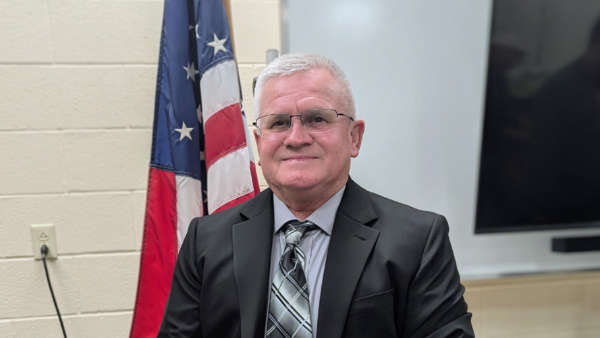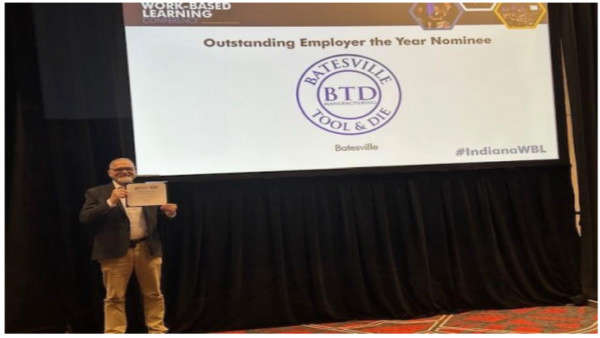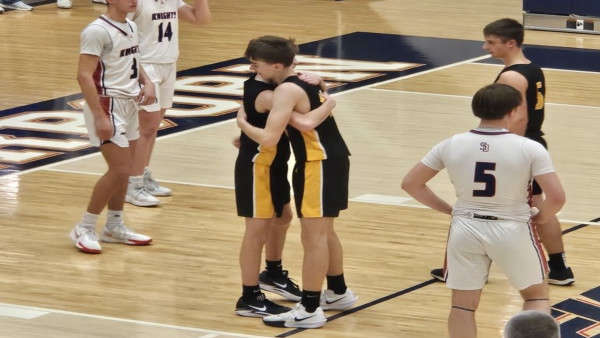Hospitalman Kean Babcock is a Navy flight medic in a MH-60S “Knighthawk” helicopter.

Rising Sun, Indiana native Kean Babcock is serving as a hospitalman with the U.S. Navy at Naval Station Norfolk. Photo by Mass Communication Specialist 1st Class Tim Miller.
(Norfolk, Va.) – A 2014 South Dearborn High School graduate and Rising Sun, Indiana, native is serving in the U.S. Navy with Helicopter Sea Combat Squadron Two (HSC-2) at Naval Station Norfolk in Norfolk, Virginia.
Hospitalman Kean Babcock is a Navy hospital corpsman serving with the Fleet Angels, a versatile squadron that’s capable of completing a number of important missions for the Navy with the MH-60S “Knighthawk” helicopter.
A Navy hospital corpsman is responsible for acting as a flight medic who flies in the back of the helicopters for search and rescue operations.
Babcock credits success in the Navy to many of the lessons learned growing up in Rising Sun.
“I was taught to always stay calm and relaxed even when you are stressed,” said Babcock. “People get too strung out sometimes and stress gets to them sometimes. It can make the job harder when you are stressed out. It's important to stay calm and focused.”
HSC-2 trains more than 1,500 pilots, aircrewmen and aviation students annually. Squadron members train those who will fly and maintain the MH-60S helicopter in a variety of missions, including fleet logistics support, medical evacuation, humanitarian assistance and disaster relief.
When flying the “Knighthawk” helicopter, members of the Fleet Angels search for surface ships, support special operations forces, conduct combat search and rescue missions, and perform other military operations around the world.
“I am very excited to start flying and performing an aircrewman's job,” said Babcock. “I got here about two weeks ago and I can't wait to start my real job.”
A key element of the Navy the nation needs is tied to the fact that America is a maritime nation, according to Navy officials, and that the nation’s prosperity is tied to the ability to operate freely on the world’s oceans. More than 70 percent of the Earth’s surface is covered by water; 80 percent of the world’s population lives close to a coast; and 90 percent of all global trade by volume travels by sea.
Babcock is playing an important part in America’s focus on rebuilding military readiness, strengthening alliances and reforming business practices in support of National Defense Strategy.
“Our priorities center on people, capabilities and processes, and will be achieved by our focus on speed, value, results and partnerships,” said Secretary of the Navy Richard V. Spencer. “Readiness, lethality and modernization are the requirements driving these priorities.”
Serving in the Navy is a continuing tradition of military service for Babcock, who has military ties with family members who have previously served. Babcock is honored to carry on the family tradition.
“My dad, grandfather and uncle were in the Navy,” said Babcock. “I always looked up to my grandfather. It's always been a huge tradition in my family. My uncle was a hospital corpsman, too, and said it would be the coolest job ever. He was right, I do love my job.”
As a member of one of the U.S. Navy’s most relied-upon assets, Babcock and other sailors know they are part of a legacy that will last beyond their lifetimes providing the Navy the nation needs.
“Serving in the Navy means serving your country and it's a tradition I am really proud of,” added Babcock. “I am proud to be a sailor like all the men in my family have been for the last four generations.”

 Dearborn County GOP Caucus Selects Baker as New County Councilman
Dearborn County GOP Caucus Selects Baker as New County Councilman
 Plungers Brave Rain, Cold to Raise Thousands for Special Olympics Indiana
Plungers Brave Rain, Cold to Raise Thousands for Special Olympics Indiana
 Registration Deadline Approaching for State of the Community Breakfast
Registration Deadline Approaching for State of the Community Breakfast
 Batesville Tool & Die Nominated for Outstanding Employer of the Year, Work-Based Learning
Batesville Tool & Die Nominated for Outstanding Employer of the Year, Work-Based Learning
 Dearborn Co. Areas to Avoid Due to High Water
Dearborn Co. Areas to Avoid Due to High Water
 Bascom: House Lawmakers Launch Philanthropy Effort to Support Hoosier Veterans
Bascom: House Lawmakers Launch Philanthropy Effort to Support Hoosier Veterans












